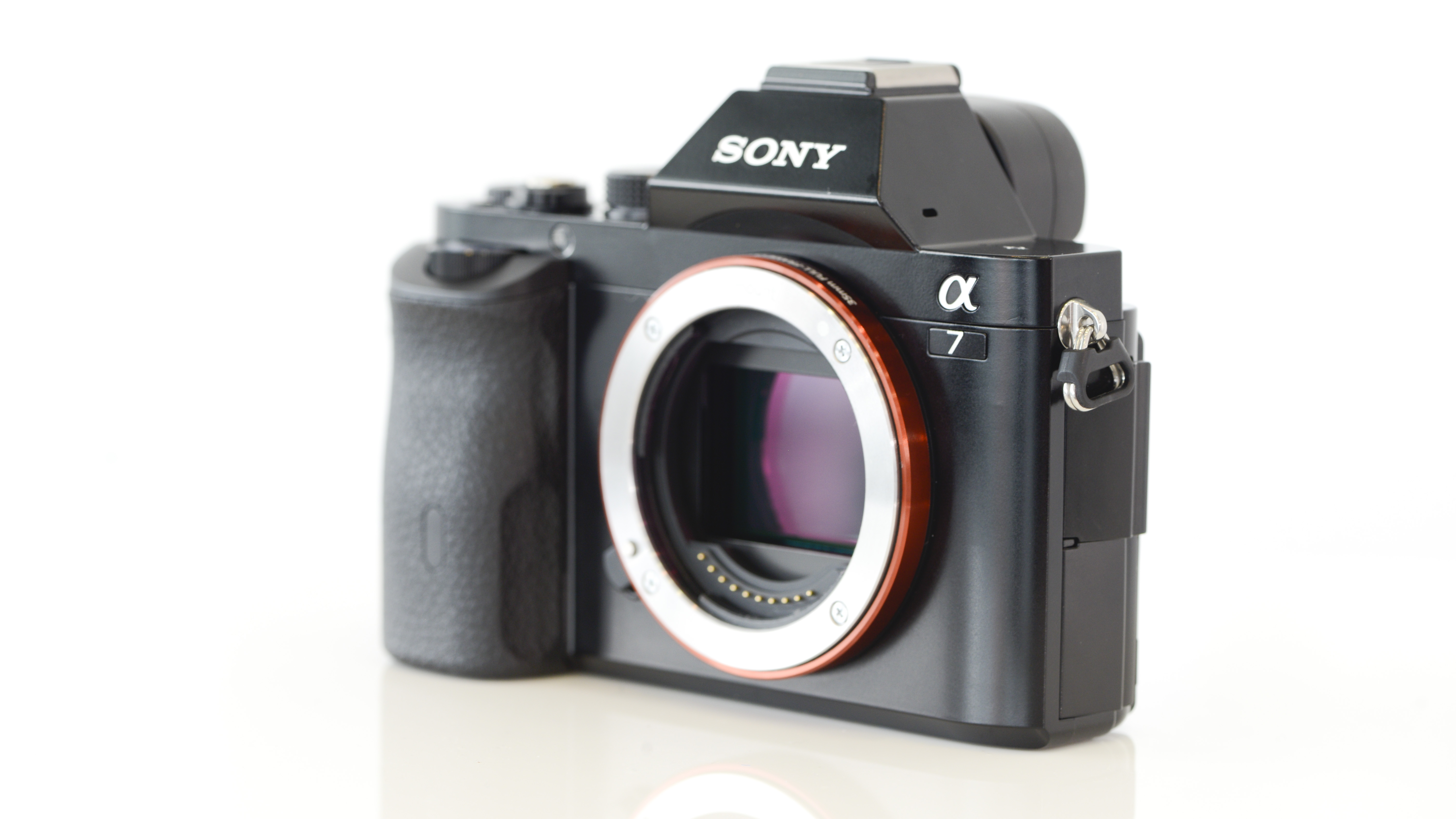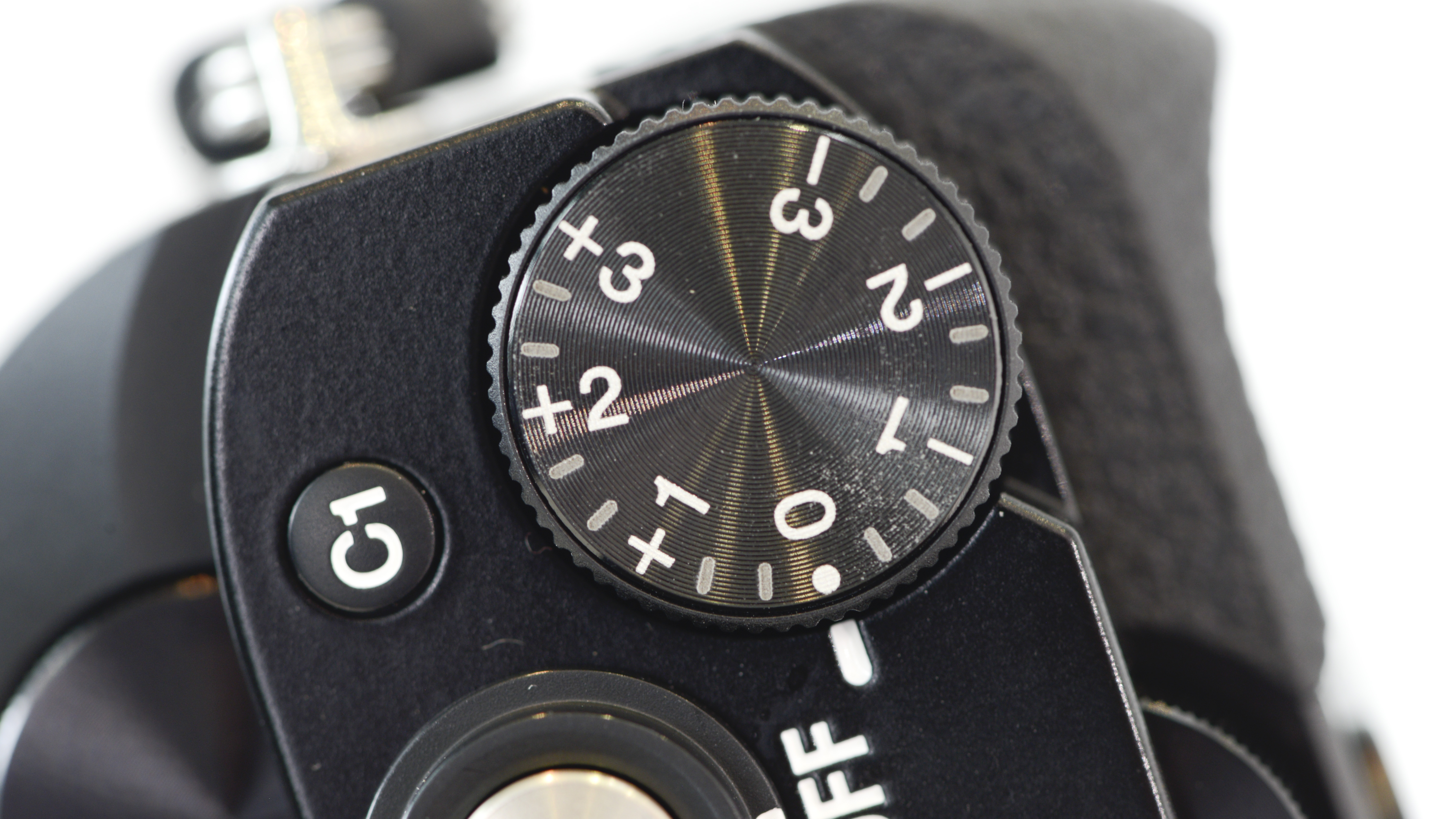Why you can trust TechRadar
Although the camera itself is considerably larger than NEX cameras which feature an APS-C sized sensor, probably the first thing you'll notice about the A7 is its small size compared to other full-frame interchangeable lens cameras such as the Nikon D610 or Canon EOS 6D.

That said, it still has a reasonably chunky grip which gives excellent purchase, especially when using the camera one-handed. The entire design of the camera is a little boxy, which will be appreciated by some, but not by others. While it's true that it doesn't have the retro gorgeousness of Fuji's X system cameras, there's a certain simplistic appeal. There's a satisfying number of dials and buttons on the camera, which will be appreciated by the enthusiasts that the camera is aiming itself at.
The majority of the buttons on the camera are grouped on the right hand side, making them easy to reach with the thumb - another bonus when using the camera one handed.

On top of the camera is a mode dial for switching between the various exposure modes on offer, including aperture priority and shutter priority. There's also space here for up to two groups of customisable settings, which is useful if you often find yourself shooting in a particular type of condition, such as low light.

Just above the hand grip is a scrolling dial which can be used for making changes to settings such as aperture or shutter speed, depending on the mode you're shooting in. It's naturally placed to be found when using the camera one handed and feels like a natural extension to your finger. On the back of the camera, where your thumb would naturally sit, is a second scrolling dial which can also be used to set aperture or shutter speed. If shooting in fully manual mode, you can use the front dial for aperture and the back dial for shutter speed, making for a very fluid way to work.
Also on top of the camera is an exposure compensation dial, which is also useful when shooting one-handed, and easily – but crucially, not too easily – changeable with your thumb.
One of the best things about Sony cameras is the amount of customisation they offer. The a7 is no different, with three buttons labelled as "c" for customisable. You can also customise some of the other buttons, offering plenty of user-friendly scope depending on how you like to work.
Sign up for breaking news, reviews, opinion, top tech deals, and more.

The a7 offers a tilting LCD screen that's not fully articulated – so more useful for portrait shooting – which is great for shooting from awkward angles. You can tilt it down for composing from above, or up for shooting from high angles, such as above your head.
In order to change the autofocus point, as standard, the c1 button on the top plate first needs to be pressed to bring up "focus settings". You then use the directional arrow keys to move around the screen to the point you wish to use. It's quicker than some other Sony cameras, but it's still not as lightning fast as using a touchscreen, which can be a little frustrating if you're trying to work speedily.
For the first time in a Sony system camera, you're able to change the size of the AF point, between small, medium and large. This is helpful if you want to focus on a fine detail.

There's also an electronic viewfinder, which offers an incredible 2.4 million dots in its half-inch size. An eye-sensor ensures an almost seamless transition between the EVF and LCD, and is very useful. The EVF itself is also bright and clear, making it lovely to use. Electronic viewfinders have suffered from a bad reputation in the past, so it may be difficult to convince traditional full-frame users of the benefits of working with an electronic viewfinder. But they are varied and include the ability to instantly see whether you've captured the shot you need.
Anyone familiar with previous Sony cameras should be at home with the menu system, which is for the most part reasonably arranged. Sony has chosen to use the Alpha menu system for the a7, rather than the NEX menu system, which I think is a blessing as the latter can be a little hard to navigate at times.
Current page: Build quality and handling
Prev Page Introduction and key features Next Page Performance
Amy has been writing about cameras, photography and associated tech since 2009. Amy was once part of the photography testing team for Future Publishing working across TechRadar, Digital Camera, PhotoPlus, N Photo and Photography Week. For her photography, she has won awards and has been exhibited. She often partakes in unusual projects - including one intense year where she used a different camera every single day. Amy is currently the Features Editor at Amateur Photographer magazine, and in her increasingly little spare time works across a number of high-profile publications including Wired, Stuff, Digital Camera World, Expert Reviews, and just a little off-tangent, PetsRadar.
